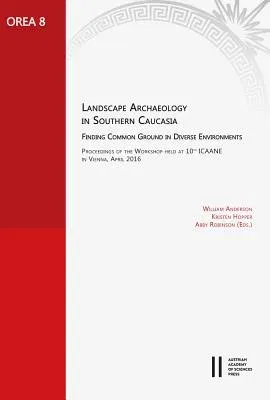Recent years have witnessed an explosion of research projects in
Southern Caucasia that apply the methodologies and approaches of
landscape archaeology. Focused on understanding the interaction between
humans and their environments at multiple temporal and geographic
scales, these projects have made use of intensive and extensive surveys,
remote sensing and GIS-based analysis, very often taking a diachronic
view. Landscape Archaeology in Southern Caucasia presents and reflects
on projects currently employing these fresh perspectives and techniques
in the lands between the Black and Caspian Seas, including and adjacent
to the Greater and Lesser Caucasus mountain ranges; this takes in
Armenia, Azerbaijan, Georgia, and parts of eastern Turkey and
northwestern Iran. Through the centuries, this region has been a vital
zone of contact between the Near East, Anatolia and Central Asia, but
has also - in large part due to its remarkable and often difficult
terrain of mountains, river valleys and plains - maintained a unique and
fascinating local trajectory of development. Landscape Archaeology in
Southern Caucasia is the product of a workshop held at the 10th ICAANE
in Vienna in April 2016, which brought together scholars from around the
world engaged in archaeological survey and landscape analysis in
Southern Caucasia. The contributions in the volume cover a broad
timescale, from the Neolithic through the medieval period and into the
modern day, and deal with such themes as the relationship between past
and present landscapes, heritage management, the use of remote sensing,
the value of integrating historical texts and legacy data into new
projects, survey methodologies, and patterns of movement. The volume
also includes discussion of avenues for further research, particularly
in the fields of information sharing and deeper engagement with legacy
data. Finally, Landscape Archaeology in Southern Caucasia reflects and
celebrates the spirit of collaboration between scholars within and
beyond Southern Caucasia that is both apparent in the diversity of
current projects and crucial to achieving the aims of future work in the
region.

